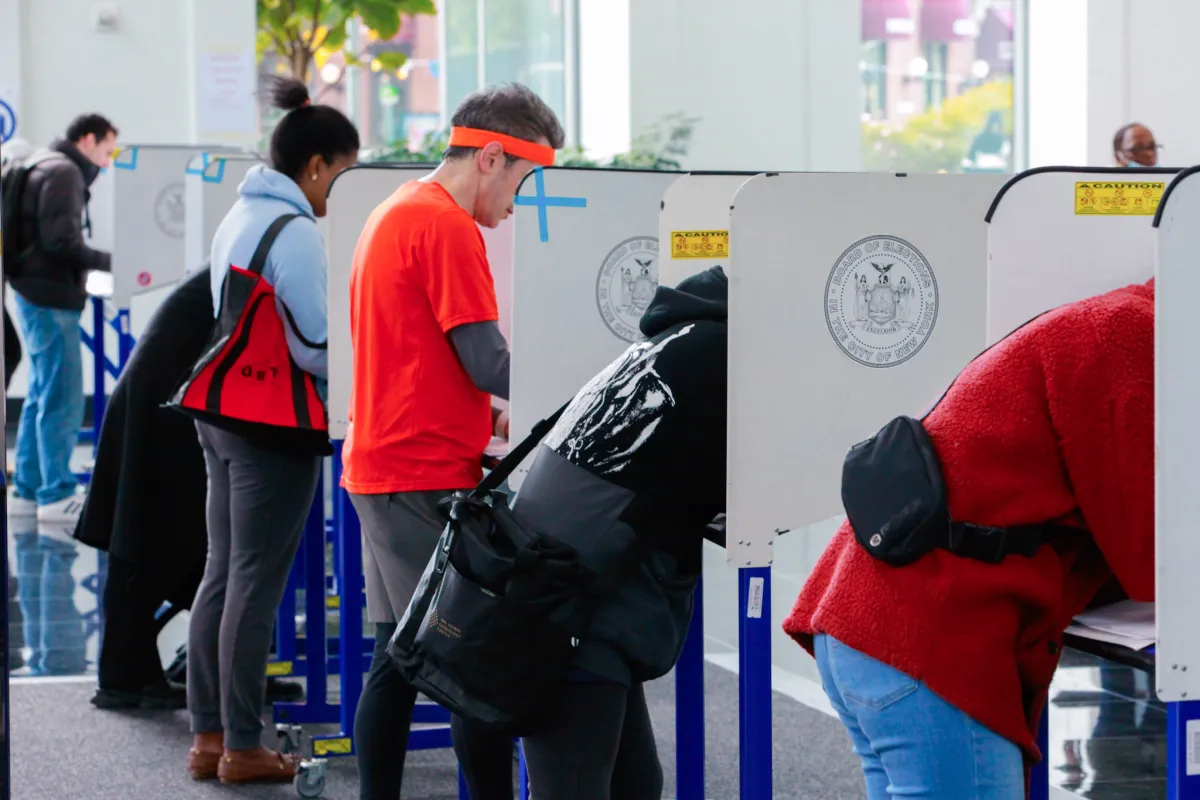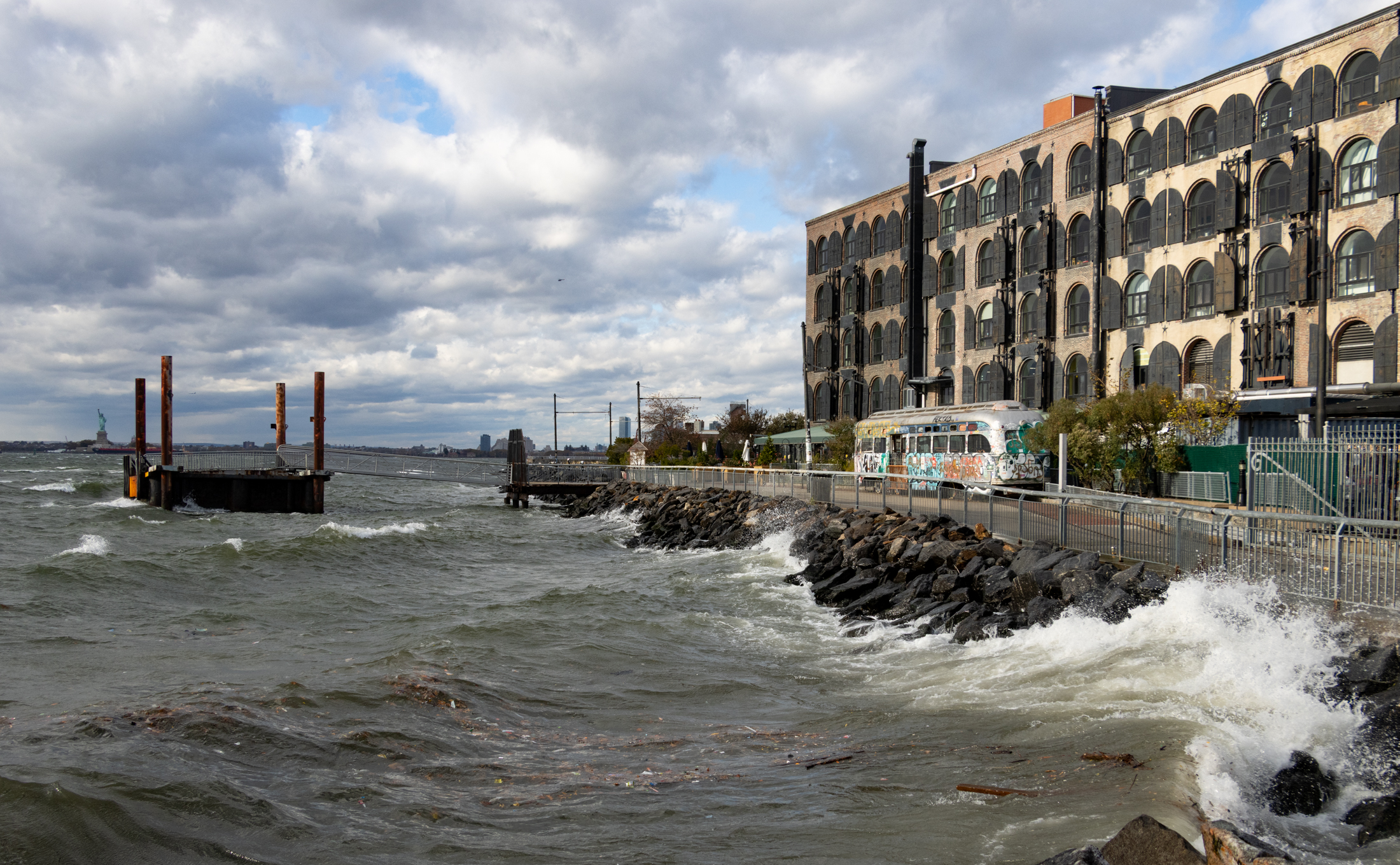ESDC Certifies Yards Environmental Report
As expected, the Empire State Development Corporation (ESDC) Board of Directors certified the Atlantic Yards Final Environmental Impact Statement (EIS) at their meeting yesterday. While the ESDC pointed to cutbacks in the number of apartments and the addition of a school to the plan as evidence of some original thought, critics called the move “a…


As expected, the Empire State Development Corporation (ESDC) Board of Directors certified the Atlantic Yards Final Environmental Impact Statement (EIS) at their meeting yesterday. While the ESDC pointed to cutbacks in the number of apartments and the addition of a school to the plan as evidence of some original thought, critics called the move “a rubber stamp.” So, what now? The Board must wait at least ten days Final EIS as well as the associated General Project Plan and the Eminent Domain Procedure Law findings. The last requirement after that is a unanimous vote from the state Public Authorities Control Board (PACB), which is controlled by the Governor, the Assembly Speaker, and Senate Majority Leader. The big question here is whether Pataki will get a chance to sign off on the deal before he leaves office or whether Eliot Spitzer may get to be involved. For a dissection of yesterday’s certification, check out Norman Oder’s Atlantic Yards Report.
Final EIS Coming Today [AY Report]
Atlantic Yards Myth #1 [AY Report]
Atlantic Yards Myth #2 [AY Report]
Main Lawn Grows to 1/3 Acre [AY Report]
Office Jobs Fall from 10K to 375 [AY Report]
FEIS defends Atlantic Yards [AY Report]
Miss Brooklyn Would Dwarf W’burgh Bank [AY Report]
Final Environmental Impact Study Released [WNYC]





Anon at 11/16 2:27- It is so obvious you haven’t been to the Bronx or to Queens. Most stadium neighborhoods change or improve despite the stadium. As much as I love Yankee stadium and the Bronx, it isn’t Yankee Stadium that has helped the neighborhood. People sweep in and sweep out after a game. Some even do tailgate parties- they bring stuff with them, not go out to the neighborhood market. If what you say were true, the area around Yankee stadium would never have been one of the hardest hit when the Bronx was burning.
I have to agree with all these pro AY boosters today. In my extensive travels I’ve always found that the nicest part of a City to live in is by its sports stadium. That’s especially true with New York. I sure wish I owned a house right next to Shea, Yankee or Giants stadium. You usually find nice looking homes, leafy streets and good restaurants right near by.
To anon 1:12 and 1:37 — What is alienating part of the community (a large part, as much as you refuse to acknowledge that fact) is the assumption that anyone who supports AY must be in the employ of Ratner and/or stupid/dishonest/etc. Reasonable people can find plenty of reasons to support the project, and although I do not think it’s ideal, ultimately, after weighing the pros and cons (and yes, I am capable of figuring those out for myself rather than accepting the DDDB party line, and yes, I do think there are pros) I’ve decided the benefits outweight the costs. I realize others feel differently. I do not consider them stupid, only that we have different priorities. But the more my opinions are dismissed as ignorant or bought, the less I am inclined to listen to the other side, or think they have anything other than their own self-interest at heart. Congratulations, you’ve toally alienated me.
Bulge group, the same guys that brought you the Enron, Tyco and Worldcom disasters. Don’t think I would take advice from them about what’s best for Brooklyn at this point, wall street pedigree aside.
In common use, the term ‘bulge bracket’ refers loosely to the group of investment banks considered to be the largest and most profitable in the world, as measured by various league table standings.
Commonly, Goldman Sachs, Morgan Stanley, J. P. Morgan & Co., and Merrill Lynch are considered the undisputable examples. UBS, Bear Stearns, Citigroup, Credit Suisse, Deutsche Bank, and Lehman Brothers are all also widely considered to be in the U.S. bulge bracket. Ultimately it is a subjective term, sometimes based on Thomson Financial League Tables or other deal and market share rankings.
Credit Suisse and UBS are largely the non-U.S. investment banks that are bulges
anon 1:12pm, you forgot to mention that they’re also attempting to divide Brooklyn in terms of class by falsely promising to offer affordable housing and a lot of new jobs.
If they really cared about poor people they would build the affordable housing units immediately after or concurrently with the building of the arena.
They probably need to concentrate on building community support in their alternate locales (long island city, queens and newark).
But given their current strategies, I doubt they will be successful there also.
please explain what “buldge bracket” is – I’m slightly curious.
Message to Bruce Ratner,
you need to fire your internet goons. Their divisive tactics of dividing blacks and whites, brooklyn east and brooklyn west is a miserable failure. These goons only ends up further alienating the community with their constant barrage of insults and offense to our intellect and sensibilities. The create activists and nimbys out of those who were previously neutral on the matter. AY probably has merits that stands on it own but your internet thugs and cronies are derailing all your hard work and further galvanizing the community against you.
Sorry but I don’t work for FCR so your baseless insult is way off target. If you need to know, I work on Wall Street for a buldge bracket investment bank and live in the AY impact zone. Needless to say, I didn’t have to rely on my Wall Street pedigree or my Harvard MBA to figure out that the development of Atlantic Yards is in my best long term economic interest.